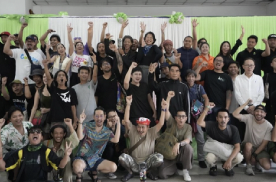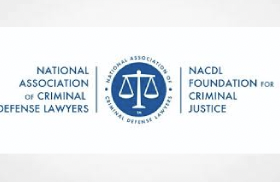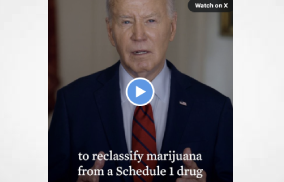LARIBA – Sharia Finance – we hope that some of our readers enjoyed our initial attempt at explaining the basic principles of Sharia as applied to both Medical Cannabis and basic rules of finance. At the end of our article, we appealed for assistance in sourcing information about more advanced aspects of Sharia Finance. Well, one of Sean Hocking’s followers provided the next piece in the puzzle.
We went ahead and purchased The Art of RF (Riba-Free) Islamic Banking and Finance: Tools and Techniques for Community-Based Banking (Wiley Finance) from amazon.com. We had no idea what to expect when the book arrived. Well, I sat down close to a week ago in the evening and started reading. A week later, we finished reading the 483-page book, and we are absolutely impressed by the skills of the author, Dr. Yahia Abdull-Rahman, and the concepts of RIBA-Free finance. We have always believed that an inquisitive mind and the ability to read provided the tools to learn anything. We are certainly not expert with Sharia Finance but have certainly learned quite a bit. Our intention is to share bits of what we have learned in between everything else we are doing.
LARIBA – Sharia Finance
Riba-Free (RF) banking-comes the expanded edition of the definitive resource that offers an understanding of applying Islamic banking and financial practices. No matter what your faith or religious beliefs, the book shows how to take a modern American approach to incorporate Islamic financial principles into banking and investment techniques.
The Art of RF (Riba-Free) Islamic Banking and Finance describes the emergence of a culture of Islamic banking and finance today, which is based on the real Judeo-Christian-Islamic spirit and has proven very effective when compared to 20th-century models that use financial engineering and structural techniques to circumvent the Shari’a Law. The author also reveals information about how fiat money is created, the role of the Federal Reserve, and the US banking system. Abdul-Rahman includes a wealth of real-life examples and offers an analysis of how this new brand of banking and financing yields superior results.
Offers the fundamentals of Riba-Free (RF) banking
Shows how to apply RF to everything from joint ventures and portfolio management to home mortgages and personal finance
Reveals what it takes to incorporate Shariah Law into US financial systems
Includes information on why RF banking is a socially responsible way to invest
There is a website that is coordinated with the book at lariba.com
LARIBA – Sharia Finance
that contains a wealth of resources and information, two of which deserve special mention for anyone with a desire to learn about the pragmatic aspects of Sharia Finance.
The Frequently Asked Questions [“FAQ’s] contain an amazing wealth of information.
The LARIBA Fatwa discussion is absolutely riveting and has a strong resemblance to the procedures that the Orthodox Union does in certifying that food products are properly Kosher under the rules of the Jewish faith.
They have included an Independent Sharia Auditors report which just about blew my mind…a firm of Sharia auditors based in North Carolina of all things.
LARIBA – Sharia Finance
We don’t typically like to “lift large sections of text, however, Dr. Yahia Abdul-Rahman’s explanation of the home finance model encapsulates a substantial number of critical concepts in a framework that is rather easy to understand.
Our home financing model is based on the concept of “Declining Participation in Usufruct” (DPU) (Declining Musharaka in rent). This is done as the basis for calculating the monthly payment and marking the value of the property to the market using actual market rental values of similar properties in the same neighborhood. The uniqueness of the LARIBA model is that we DO NOT RENT MONEY. Instead, we approach each transaction as an investment. The market rental value of the property financed determines attractiveness as an investment. If the house is overpriced, the model will flag this fact to the homebuyer in order to go back to renegotiate a lower price or to wait until an existing market “bubble” is burst.
It is important to note that each property like a car, a home, a commercial building has two rights of ownership. The first is the ownership of title to the property called “Milkul Raqabah” (the ownership of the neck). The other right is the right to use the property (Haqul Manfa’aa – the usufruct). For example, one can own a car or a house but he or she can rent out the right to use the car or the house by leasing it.
LARIBA conceptually purchases the property jointly with the client. LARIBA would authorize the client to act as its agent (wakeel) to select, negotiate the price of, and purchase the Property.
LARIBA authorizes the client to undertake the purchase of the property from the vendor and record the title (register it) directly into his or her name. The client becomes the owner of title to the house or owner of Milkul Raqabah. LARIBA retains its share of the usufruct – Haqul Manfa’aa.
Out of their own free will, the client offers to buy and LARIBA accepts to sell its share/units immediately at the same price. The value of the sale is paid in monthly installments over a period of time up to 30 years without adding any interest. The monthly payment is called REPAYMENT OF CAPITAL (“RofC” – pronounced rofsee).
LARIBA and Client agree to perfect a lien [1] (implied co-ownership) on the property in favor of LARIBA. LARIBA agrees with the client to share in the income realized from the use of the house based on the actual rental value as measured in the market. With this lien, the client and LARIBA share the income from the lease of the property proportionately between them. This income is called Return on Capital “RonC” -pronounced “ronsee”. As the client pays back his or her “Riba Free Loan – dayn”, this progressively reduces LARIBA’s share in the usufruct (Haqul Manfa’aa) as well as increases the client’s share gradually to reach 100% at the end of the Financing Period.
LARIBA – Sharia Finance
In order to make sure that money is not rented at the interest rate of the day which is RIBA, we research the actual market fair rental value of the property in its geographic location. The client and LARIBA officer – each – research the market to find how much a similar property leases for in the same market of the property to be financed and present three documented estimates each (a total of six estimates). Sources of rental value estimates include leasing agents, real estate brokers, Newspaper advertisements and online resources. The goal is to obtain the rental value, per square foot based on similar properties. The client and LARIBA compare their findings and agree on a rental value to be used in our proprietary model.
The monthly payment paid by the client over the financing period of up to 30 years consists of a portion of the unpaid Riba Free loan (dayn) – RofC and an amount equal to LARIBA’s proportional share of the agreed-upon rental value – RonC. Our proprietary model does the arithmetic using the proprietary Riba Free algorithm.
The LARIBA Computer Model inputs are: the property value, amount to be financed, the number of years to pay back and the monthly rental value obtained from the market. The unknown here is the Rate of Return on Investment – ROI. This contrasts with riba-based banks where they use an interest (riba)-based amortization computer program. They input: the amount to be financed, the number of years to pay back and the rent of money (interest) and the unknown is the monthly payment.
LARIBA – Sharia Finance
The LARIBA Model analyzes the Rate of Return on Investment in the property. There are three possible outcomes from this analysis of the level of the ROI. These are:
If the ROI is higher than the return expected by our investors. LARIBA decides to finance and reduces the rent in order to make the monthly payment compete with Riba-based banks.
If the ROI is much lower than what our investors are expecting (say 2% while the competing investments yield 6%), LARIBA declines the investment and the financing is denied. This has been the main reason for LARIBA to raise the red flag for many of our customers in Arizona, Florida, Massachusetts, Nevada, Washington DC and parts of California. We have saved many of our applicants from participating in the 2008 real estate bubble.
If the ROI is marginally lower than the expected return by our investors (say 5% and our investors expect 6%), LARIBA advises the client to renegotiate the price lower. We have done that a few times.
Upon full Repayment of Capital, LARIBA will release its lien back to the Client thus signaling the end of the transaction.
In order to protect our clients in case of adverse situations against the possibility of excessive legal fees, unusual language in the contracts that make them irregular and difficult to pursue legally, and the putting of name of company on title with client, LARIBA uses standard industry and regulatory sanctioned contracts and uses a rider called the LARIBA Agreement which describes the process followed above and the rental value used as the basis for the payment calculations.
Their offfices are located in Whittier, California, and you can bet we are going to pay them a visit sooner than later. It strikes us that 1,500 words on this topic is more than sufficient…there will be additional articles. We have certainly gained both knowledge of and respect for Islamic Banking principles.
A final thought, I have been in professional practice for almost 39 years. For me to be able to pick up a book and learn the principles of a completely different set of rules…reinforces what the difference between a professional education that comes with the expectation of a lifetime of learning vs. becoming a mechanic.
LARIBA – Sharia Finance


















